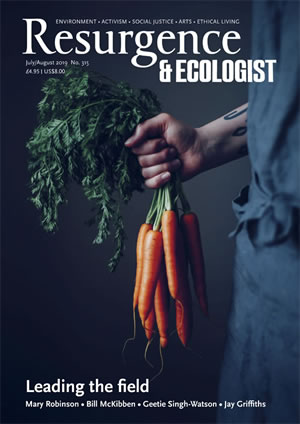This is so much more than a diary. It’s a torchbearer of light and colour in an often dark world.
At a time where we are seemingly more disconnected from the natural world than ever before, writing about connection with Nature and the benefits of being outdoors is a growing trend. Rarely, though, is a book published in this genre – in almost any genre – a stand-alone work of art, but The Wild Remedy is just that.
Emma Mitchell isn’t just a writer. She’s a scientist, and this is immediately clear in the introduction, where she teaches us about the science behind the benefits of the outdoors on our mental health. She is also an artist with a flair that most of us could only dream of. Thumbing the pages of The Wild Remedy is like looking at a cathartic flick book of Nature sketches and patterned collections. It’s gorgeous.
Mitchell takes a good photograph, too, such as the snapshot of a leafy pathway into Fermyn Woods that entices us into the diary proper, but not until we’ve glanced over her key sighting lists for each month, which promise us natural wonder through the seasons as we read on. We start in the woods and join her as she observes what she calls “seasonal signposts”, in the form of common darter dragonflies displaying, and leaves changing colour as autumn beds in. Again, she stuns me with the science behind this process, as she does throughout the book with snippets of reasoning. The writing is not overly scientific, though, and these elements are balanced with magical illustrations and musings on folklore and instincts. I found myself desperate to get outside and search out my own collections of natural elements to arrange and photograph, in the spirit of the hunter-gather instinct she writes about.
As Mitchell descends into a deep depression, I drop with her. The pain and numbness that she describes mirror my own experiences, and I believe that reading her account will help so many other people who feel the same. Her explanation of seasonal affective disorder is beautiful, as are the illustrations that pepper this particular chapter of the book. Her language is evocative, especially when she describes a starling murmuration as seeming to “crawl like an aerial amoeba” and likens the birds’ movements to a Dali painting.
I feel the weight and sludginess of her illness as it worsens. She becomes flat, though not in her writing, and she continues to give us a dreadfully honest and accessible account of the depths of depression. Science is brought to the forefront again as she explains the chemical imbalances in the depressed brain in a way that didn’t make my own brain switch off.
The light begins to return as the months move into spring, and I revel in the sensory experiences she shares with us, her joy as butterflies emerge, and her encounters with interesting birds and rare orchids. She impels me to get outside. I think I’m even more interested in wild flowers now, as throughout the book she describes the common species she encounters and they embed into my psyche.
Nature doesn’t cure our mental health, but, as Emma Mitchell discovers and shares, it can be a salve for the soul when ours are lightless and broken. This book will be a catalyst for many others to discover and rediscover the power of the outdoors, and the evidence within it can’t be argued with.






